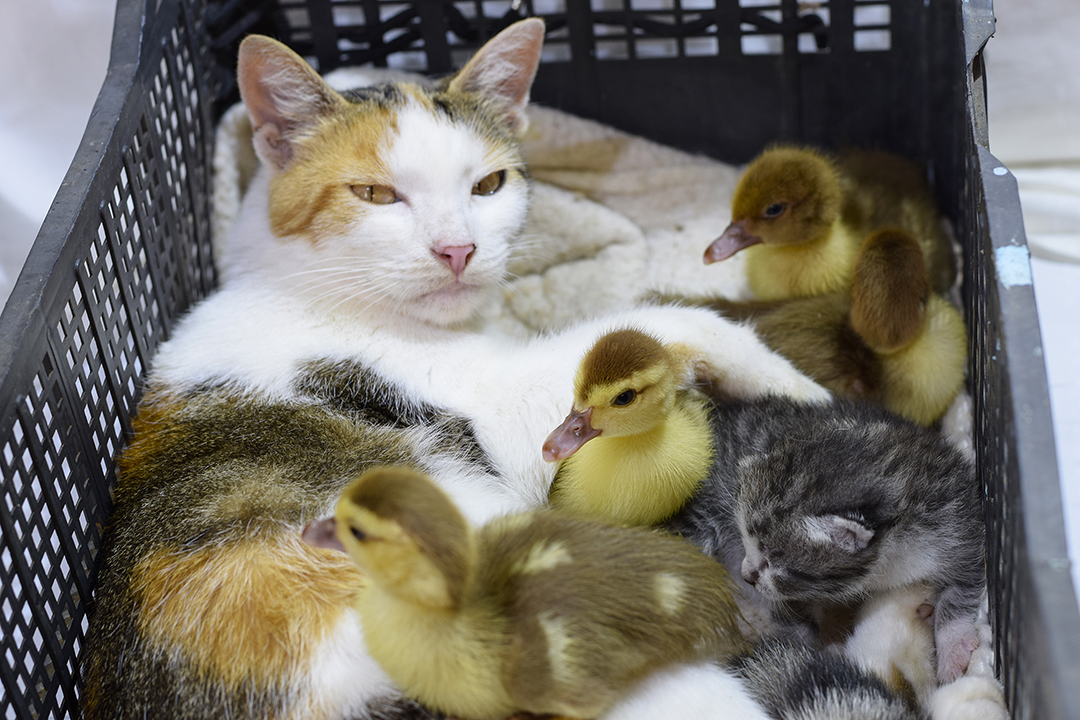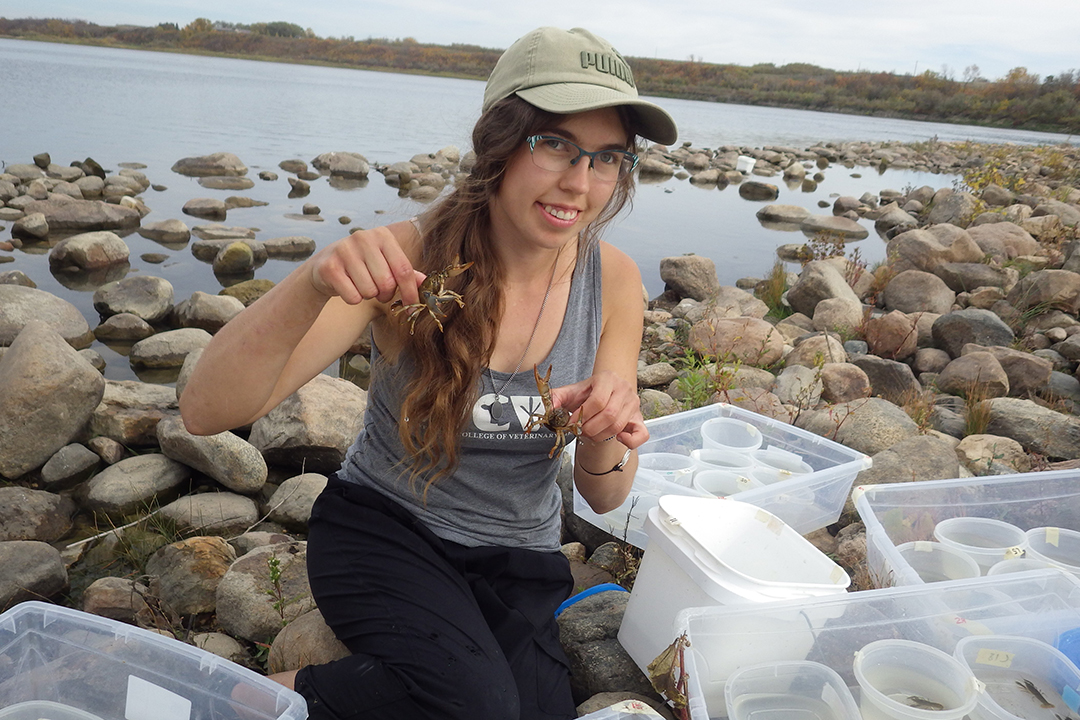
Family or foe? How prey and predator animals can develop mother-infant bonds
Ever wonder why a pig is willing to nurse tiger cubs? Or why a dog will take care of a baby leopard? What about a cat that fosters ducklings?
By Gabrielle AchtymichukNone of these pairings should have occurred because they involve predators and prey. In the wild, one species would have eaten the other. But all these true stories of unlikely animal families can be explained by science.
After a baby is born, the mother must learn to recognize her newborn, a process known as “maternal recognition.” Most animals don’t automatically know who their babies are — recognition develops over time. During the first few days of life, mother animals learn the spots, stripes, smells and voices of their little ones so they can pick them out of a crowd.
This learning process occurs in a few different ways, but the most common method for mammals is called “spatial maternal recognition.” After a mother gives birth, she remembers where her babies are located and then memorizes the appearance of all the young in that area, allowing her to identify them later in life.
This may not seem like a good system: if the babies move, the mother may get confused. But think of a litter of kittens or puppies or even a human baby — the young are born small, helpless and with limited vision so they don’t move far on their own.
Since the mother remembers her babies based on their location, issues can occur if another animal enters the area and mixes with her young. While this scenario is uncommon in the wild, zookeepers and livestock producers can rely on this cross-fostering process to get a mother to accept another baby quite easily, even when it’s a different species. Slip a baby animal into another litter and then let nature do its work.
These stories highlight the power of maternal bonds. For example, when a mother tiger rejected her three newborns in a Chinese zoo, the zookeepers presented the baby tigers to a pig that had recently given birth. She allowed the tiger cubs to nurse alongside the baby piglets without any thought to their different appearance.
A similar story took place at a zoo in Russia. A female Amur leopard had attacked her previous litters, so when she gave birth again, zookeepers rescued Milasha, her female cub. Tessa, a golden retriever that had recently given birth to a litter of puppies, became Milasha’s new mother without hesitation. This cross-fostering saved Milasha’s life, but it also helped to preserve an endangered species since there are fewer than 100 Amur leopards left in the wild.
While some cross-fostering occurs intentionally, a cat that adopted baby ducklings was accidental. On a farm in Ireland, a cat gave birth shortly before a group of duck eggs hatched. Since they were all born close together in the barn, the mother cat recognized the ducklings as her own and raised them with her kittens.
Maternal recognition is an amazing process, but there’s a short time limit in which it can occur since it’s driven by oxytocin — a hormone involved in childbirth, nursing and bonding. Just before childbirth, the pregnant female’s level of oxytocin rises and remains high for a few hours or a few days, depending on the species. If this window is missed, a mother will not learn to recognize any new individuals mixed into her litter as her own.
Despite being established within a few hours or days, maternal recognition lasts for life. As the babies age, the mother continues to recognize them as her children, even if they are of a species that would make a good dinner. A similar process occurs in mammalian babies — they learn to recognize their mother, a bond lasting their entire lifetime.

As a result, these stories of cross-fostering usually have good endings: Milasha the leopard didn’t turn on Tessa the dog, the tiger cubs continued to recognize the pig as their mum, and the cat didn’t eat the growing family of ducklings. As illustrated by these animals, families don’t have to be conventional — they can come in all shapes and sizes.
Gabrielle Achtymichuk of Outlook, Sask., is a veterinarian who graduated from the Western College of Veterinary Medicine (WCVM) in 2021 and is now a master’s student studying disease ecology and predator-prey behaviour at the University of Saskatchewan.
Reader's question
Can you tell me if this bonding only occurs with mammal mothers (those that can nurse)? What about birds or reptiles?
Response from Dr. Gabrielle Achtymichuk
July 26, 2022
Great question, I'm glad it got you thinking!
Spatial maternal recognition isn't limited to mammalian species. Rather, it's most common in species that have young which are born more helpless and dependent on their mother. For example, young that don't move away from the birth site for many days, and/or they have limited vision. This includes many mammals but many bird species as well. Numerous newborn birds are dependent on their mothers and can't leave their nests.
It also includes some reptile species, but it's less common as there is more variation in the role of reptile parents with their offspring. For example, some reptiles lay eggs and leave the area, never interacting with their young. Some reptilian species lay eggs but stay with them until they hatch and afterwards. As well, some are live-bearing — providing care to their young afterwards.
To sum up, this type of spatial recognition is not limited to mammals — it's also used in other animal categories, too.
